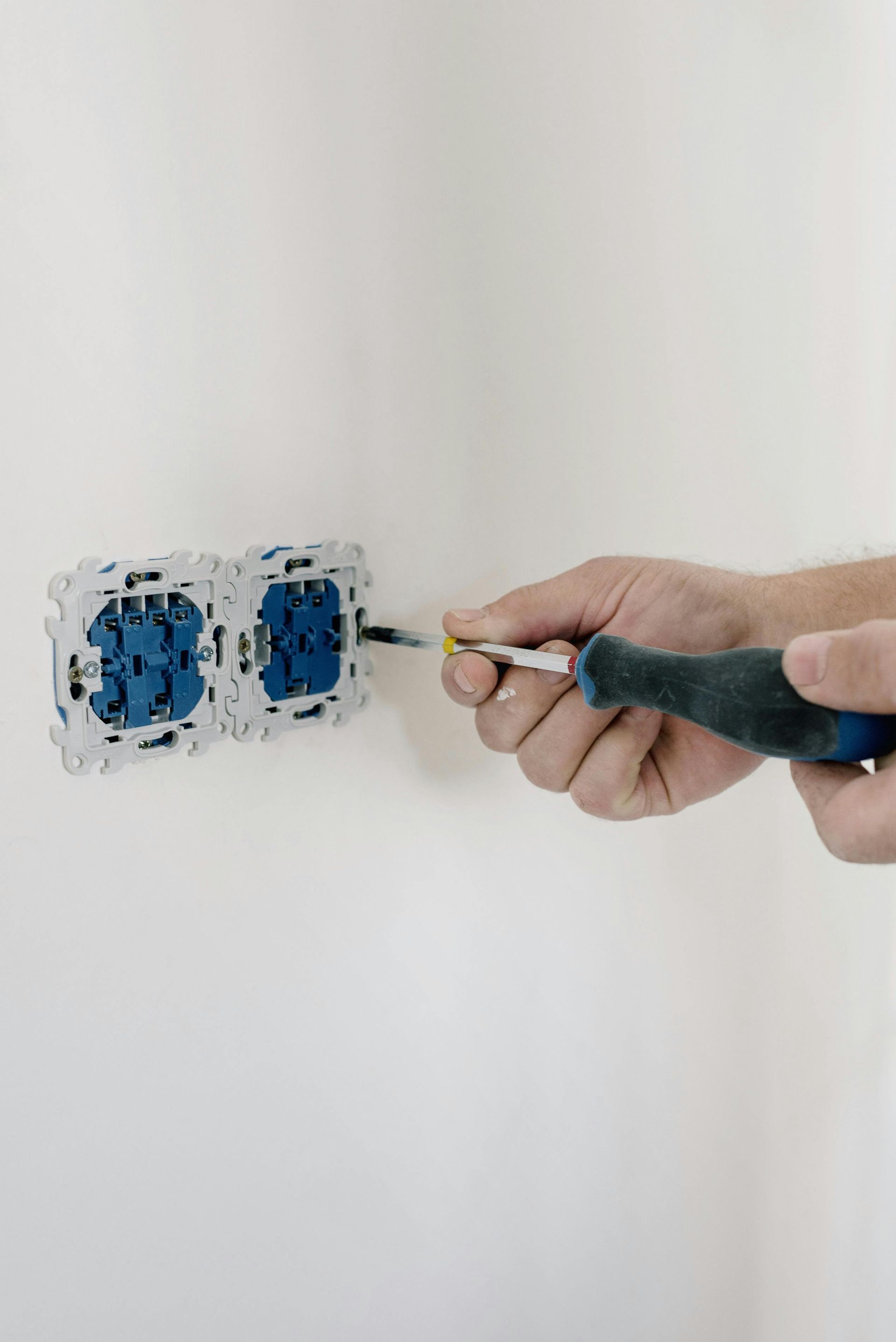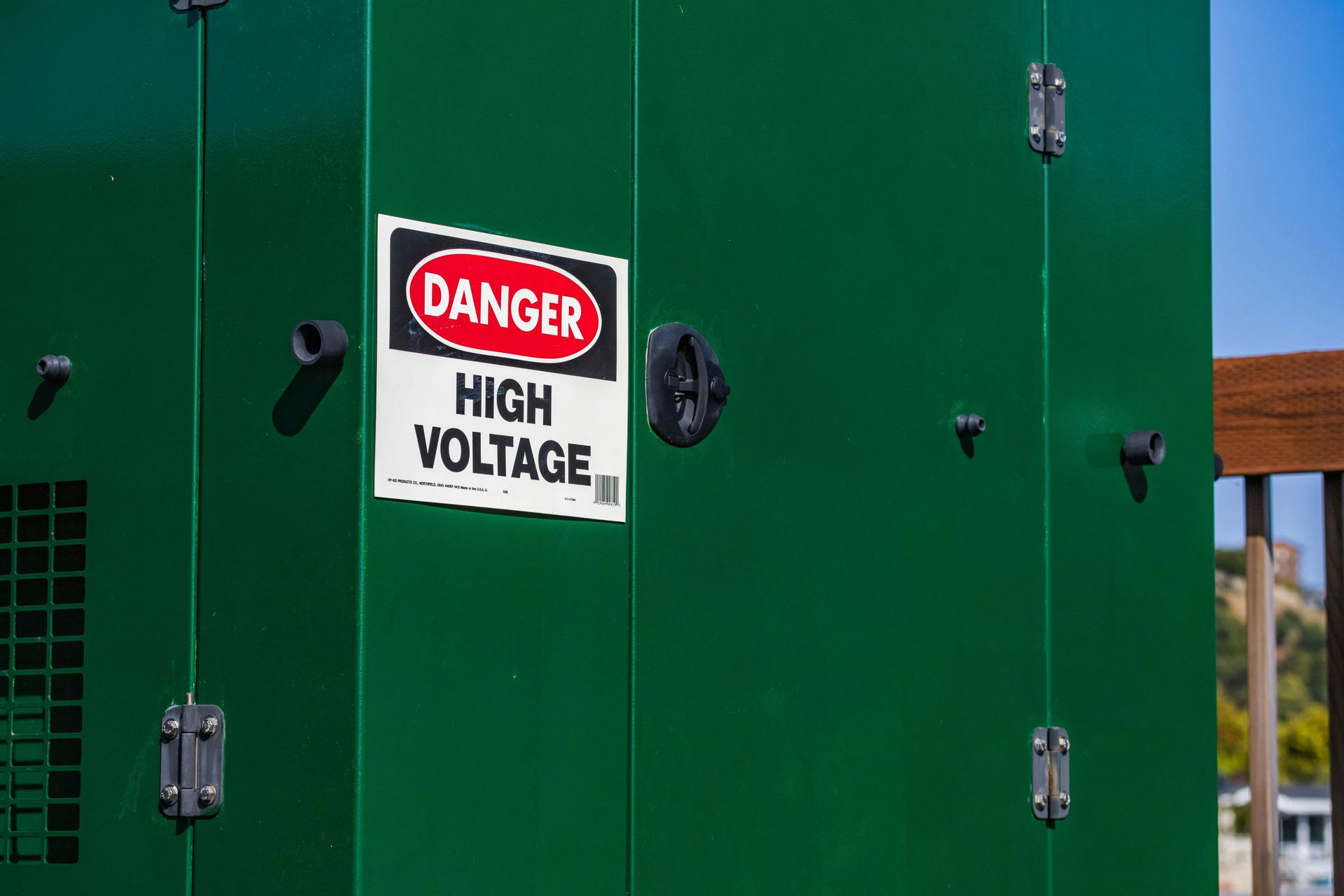Common Signs Your House Needs Electrical Rewiring ASAP
If your circuit breakers trip all the time, lights flicker or dim, or outlets feel warm or look burnt, your home’s wiring is waving an SOS. Using tons of extension cords, having an old electrical panel, or noticing burning smells and sparks from outlets are big red flags, too. These issues aren’t just annoying—they’re fire hazards. Tackling them early keeps your home cozy and safe, especially if you live in one of our local service areas. And there’s more to spot before serious trouble sneaks in.
Key Takeaways
- Frequent circuit breaker trips indicate overloaded or damaged wiring that needs rewiring for safety.
- Flickering or dimming lights suggest loose wiring or overloaded circuits requiring electrical system upgrades.
- Warm or discolored outlets signal overheating, posing fire risks that demand immediate rewiring attention.
- Burning smells or sparks from outlets are serious warnings of electrical hazards needing urgent professional inspection.
- Use of multiple extension cords and outdated electrical panels points to unsafe wiring needing prompt rewiring.
Frequent Circuit Breaker Trips
If your circuit breaker trips often, your home’s electrical system might be under too much stress. This usually means you’re running too many devices on a single circuit, and the wiring can’t handle the load. It’s the breaker’s way of protecting your home from overheating and electrical fires.
Frequent tripping isn’t just frustrating—it’s a sign that something isn’t right behind the walls. Your wiring could be outdated, or your electrical panel might not be built for the number of modern appliances you use. If the breaker keeps cutting power, it’s time to take a closer look at what’s causing it and consider rewiring. A safe home should be able to handle your daily power needs without interruption. Fixing this issue early helps you avoid bigger risks down the line.
Flickering or Dimming Lights
Lights that flicker or dim regularly are more than just a minor annoyance. They often mean there’s an unstable power supply or loose connections somewhere in your electrical system. It could also signal that your home is struggling to manage the load when multiple appliances are running at once. If the problem keeps showing up, especially in multiple rooms, the issue could be with the wiring itself. Rewiring parts of your home can help deliver a more stable and reliable power supply, keeping lights steady and reducing wear on your fixtures.
Here’s a quick way to spot what’s going on:
| Flickering Cause | What to Check | What It Means |
|---|---|---|
| Light bulb issues | Bulb type & fit | Simple fix, replace bulbs |
| Loose wiring | Switches & sockets | Could be dangerous, needs pro |
| Overloaded circuits | Appliances & load | Time for rewiring |
| Faulty connections | Junction boxes | Repair or replace wiring |
| Old wiring | Age of system | Upgrade recommended |
Outlets That Are Warm or Discolored
A warm outlet or one with discolored marks on the cover is never a good sign. This usually means there’s too much electricity flowing through, or the wires are loose and causing heat to build up. Even though it might seem harmless at first, warm or burnt-looking outlets point to real danger. The insulation around the wires may be wearing out, or the outlet could be overloaded. Left unchecked, this can lead to short circuits or even fires. The best move is to stop using the outlet right away and have it inspected. In many cases, a simple repair or a more thorough rewiring job can restore safety.
Causes of Warm Outlets
Outlets heat up for a few reasons, but the most common one is too much current passing through worn or poorly connected wires. When wiring is damaged or old, it can’t regulate the flow of electricity the way it should. This creates resistance, which leads to heat. Using heavy-duty appliances in outlets not designed for that level of load can also cause overheating. If you notice that outlets stay warm even after you unplug things, it’s time to call an electrician. Replacing old wiring and upgrading your system helps prevent these hot spots and keeps your electrical system running safely.
Risks of Discolored Outlets
Outlet discoloration is often a result of overheating or sparking behind the wall. This can happen when wires become loose, frayed, or corroded. These signs should never be ignored because they can point to serious issues.
Here’s what’s at stake:
- Increased risk of electrical fires
- Damage to connected appliances
- Shocks when plugging in devices
- Bigger problems hidden within the walls
The safest approach is to treat discoloration as a warning. A quick visual check can reveal a lot, but only a licensed electrician can confirm what’s going on.
Use of Multiple Extension Cords
When extension cords are everywhere, it usually means your home doesn’t have enough outlets where you need them. It might seem like a harmless fix, but too many cords can cause your system to overload and trip breakers more often. Extension cords are meant for short-term use, not everyday living. When you rely on them too heavily, they wear out faster and become a hazard. Heat can build up in the cords and outlets, especially when high-wattage appliances are plugged in. Adding more outlets or rewiring areas of your home to handle modern demand is a smarter and safer long-term solution. If you’re adding new appliances or features like apool or hot tub, make sure your system can support them without overloading.
Overloaded Power Outlets
Stacking extension cords or plugging multiple devices into a single outlet is risky. It’s a common cause of electrical problems, including breaker trips, overheating, and fire.
Some warning signs of an overloaded outlet include:
- Breakers that trip when new devices are plugged in
- Warm or scorched outlet covers
- Flickering lights when appliances are running
- Buzzing or crackling sounds
If any of these sound familiar, it’s time to make changes. Updating your wiring and adding new outlets in busy areas of the home can reduce the load and improve safety.
Visible Cord Damage
Damaged cords are easy to miss but dangerous to ignore. If you spot frayed wires, cracks, or sharp bends in your extension cords, unplug them immediately. Worn cords can short-circuit, spark, or even start fires. This risk grows when they’re used with overloaded outlets or heavy appliances. Keep an eye on all cords around the house, especially those used regularly. If they show signs of wear, replace them right away. And if you find yourself depending on extension cords too much, it might be time to upgrade your home’s electrical system or add dedicated lighting solutions that better fit your setup.
Frequent Circuit Breaker Trips
When too many devices run on one circuit, the system becomes overloaded. This often leads to tripped breakers and warm outlets. Older homes, in particular, struggle with today’s electrical needs.
You might be overloading your system if:
- Power cuts off when several devices are used at once
- Lights dim when you turn on high-wattage appliances
- Devices feel hot to the touch after use
To avoid overloads, reduce the number of appliances on a single outlet and consider upgrading your breaker panel or wiring. Homes with backup generators often need updated wiring to keep everything operating safely and efficiently.
Old or Outdated Electrical Panels
Older electrical panels weren’t built for the number of devices found in modern homes. Even if the panel looks fine, it may be outdated on the inside. Old components wear down, breakers become unreliable, and safety standards change over time.
Here’s a quick look at how an outdated panel can affect you:
| Issue | How It Feels | Why It Matters |
|---|---|---|
| Frequent Trips | Annoying interruptions | Safety hazard warning |
| Overheating | Worry and discomfort | Fire risk increases |
| Lack of Capacity | Frustration with power | Limits modern tech use |
| Non-compliance | Stress about safety | Fines or insurance issues |
| Unreliable | Feeling unsafe | Peace of mind lost |
Presence of Aluminum Wiring
Homes built in the 1960s or 70s may still have aluminum wiring, which was once used as a cost-saving option. The problem is, aluminum wiring expands and contracts more than copper, which can loosen connections over time.
This can lead to:
- Flickering lights or inconsistent power
- Warm or discolored outlets
- Frequent circuit trips without an obvious cause
Aluminum wiring can be replaced with modern copper wiring to prevent these issues. If you suspect your home has aluminum wiring, a professional inspection can confirm it and recommend next steps. For business owners, this is especially important, as older wiring can affect performance and safety in commercial buildings.
Burning Smell or Sparking From Outlets
A burning smell or sparks from an outlet should never be ignored. These signs mean something is overheating, melting, or shorting out behind the wall. It’s your home’s way of telling you something is seriously wrong.
Causes include:
- Loose or damaged wires
- Overloaded circuits
- Faulty outlets or old components
If you notice any of these signs, cut the power to that area and contact a licensed electrician. Fixing the problem early prevents major damage and keeps your home safe.
Frequently Asked Questions
How much does it cost to rewire a house?
Costs usually range from $3,000 to $8,000, depending on the size and layout of your home. Older homes or those with limited access may cost more due to extra labour.
How long does house rewiring take?
Rewiring generally takes one to two weeks. The timeline depends on your home's size, how much of the wiring needs replacing, and whether the walls need to be opened.
Can I live in my house during a rewiring project?
In most cases, it’s possible to stay home during rewiring, especially if the work is done in stages. However, some people choose to stay elsewhere if the power is shut off for long periods.
Does rewiring improve energy efficiency?
Rewiring improves safety and allows your home to support energy-efficient appliances, smart devices, and modern lighting setups. While it doesn't directly lower energy bills, it sets the foundation for better energy use.
How often should my wiring be inspected?
It’s a good idea to have your wiring checked every 10 to 15 years. Homes with older systems or visible issues like flickering lights or warm outlets should be inspected sooner.
Final Thoughts
If your breaker trips often, lights flicker, or outlets feel warm, don’t wait to get it checked. These signs point to bigger issues that could lead to fires or costly damage. Extension cords, outdated panels, or old wiring won’t keep up with your home’s modern needs. Electrical issues don’t fix themselves, and delaying repairs puts your home and family at risk. Getting a
professional electrician to inspect and rewire your home when needed keeps everything running safely and gives you peace of mind. If you're ready to take the next step, get A Shore Thing Electric LLC and
contact us today to schedule an inspection.



